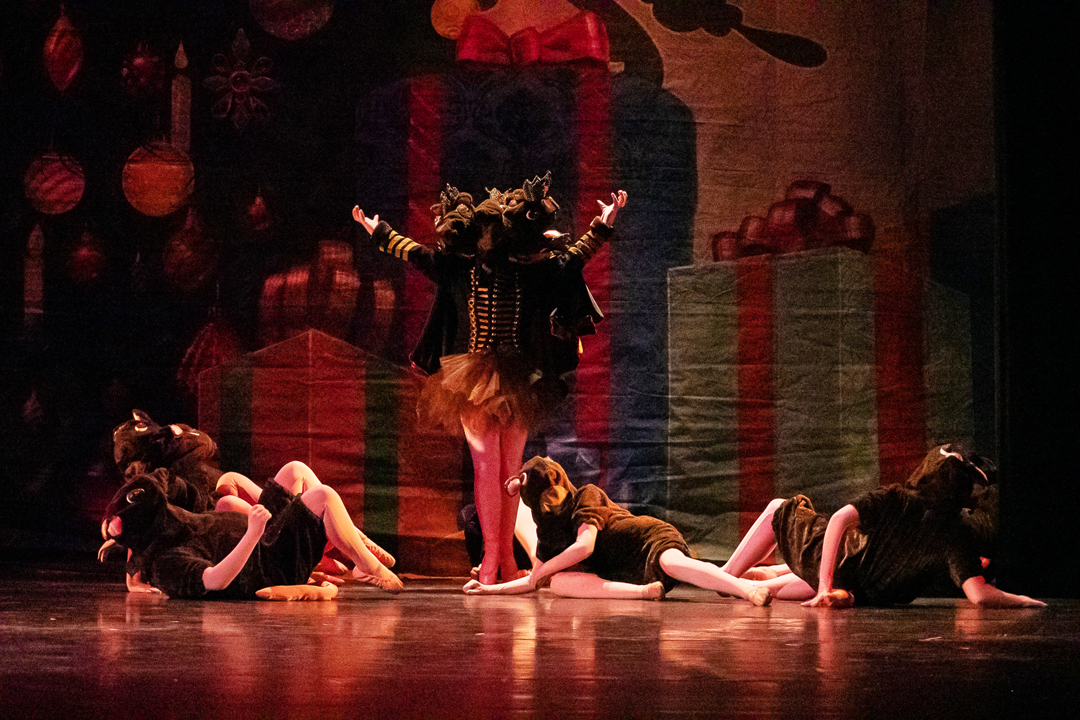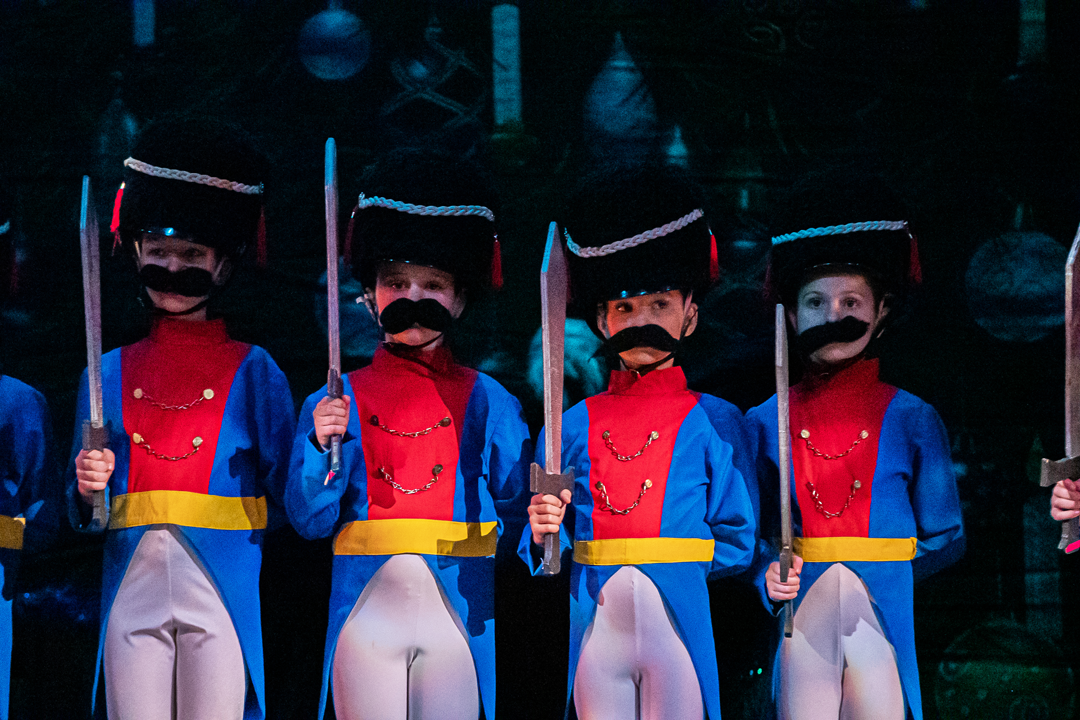Spill the Tea: The Truth Behind the Battle Scene
By: Rosari Sarasvaty

The Battle Scene has always been one of the most dynamic parts of the Nutcracker. How can it not? The music is anything but boring. Like the rest of the ballet, the Battle Scene is dance to music composed by Pyotr Ilyich Tchaikovsky. However, this particular section lasts for nine minutes. It has multiple pattern changes making the music as intricate as it is delicate, perfect for the battle scene given that it has a strong theatrical element. The intricacy of the Battle Scene also enhanced by the elaborate costumes designed for our dancers. All characters in the Battle Scene have elaborate headpieces. The Rat Queen costume, in particular, has seven heads inspired by none other than the Rat King phenomenon. If you wonder what Rat King is, it is a collection of rats whose tails are intertwined and bound together in some way. As a result of an entangling material like hair, a sticky substance such as sap or gum, or the tails being tied together. Gross? We know, but it is part of the original Nutcracker story that we want to keep alive.
The road from the studio to the stage is an uphill battle on its own. The preparation behind the battle scene is far from arbitrary as a matter of fact it is our labor of love. Every week NPD faculty gathers to brainstorm ideas for the battle scene. All of the layers of the Battle Scene are carefully planned before rehearsal to make the scene seem haphazard. There are weekly planning sessions to count the music, plan the paths, and solidify the steps for the dancers to do. Not to mention we also have to consider the complexities of the costumes when coming up with a choreography. We are well aware that this scene is huge! It is the second longest scene in all of The Nutcracker after the Party Scene. It also involves more than twenty dancers coming from different age groups. Therefore, when we choreograph, we take into account the ability of specific age groups, making sure what we asked from our dancers is within the scope of their age and skill set. In creating the dance, we asked ourselves; What would bring out the best in our dancers? What would work best on stage? Is it logistically possible? We know that providing our dancers with movements they can execute well will instill confidence and a sense of agency over their overall performance. Thus, helping them shine on stage.
As of today, it has been seven weeks since our dancers have been practicing the battle scene. Since it is a big scene, it comes with a complexity of its own that our dancers have to tackle; the music and quality of the performance to name a few. Because the music is very intricate, it is very challenging to count. Our dancers have to be able to listen to very subtle musical cues to not miss their entrance and exit during the scene. Additionally, we also challenge our dancers to embody their characters by incorporating numerous dynamics in their dance. Dancers are well aware that focusing on the technique alone in the battle scene will not cut it. They need to ‘perform’ it as well. Throughout the many rehearsals, they have risen to challenges and we cannot wait to see how it will translate on stage!
The battle scene is dear to our hearts because it is a community effort to make it happen. We are humbled to be around for more than a decade, and this year we are very grateful to be able to bring back the battle scene. As our soldiers are marching, lining up for the battle while our rats and mice are still in their hideaway. Our Nutcracker and friends from the magical land are still vast asleep. On the contrary, the grandfather clock is ticking every day telling us that as each day passes, we are a day closer to the opening night. We cannot wait to share the hard work with everybody and hope to see you in December!


